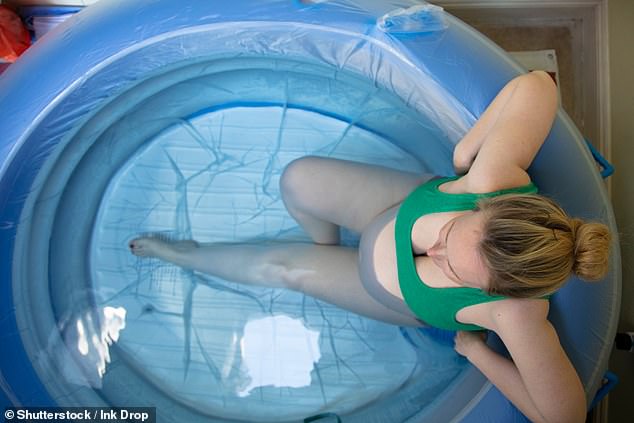Water births do not increase the risk of complications for mother or baby, NHS research shows.
They found that women with low-risk pregnancies are just as likely to have healthy births in a supervised pool as in beds.
Experts say it could have implications for thousands of women each year who use birthing pools as a form of pain relief during childbirth.
The study analyzed more than 87,000 records that used a pool during childbirth across 26 NHS organizations in England and Wales between 2015 and 2022.
The researchers explored the rate of infant deaths, the serious tears women suffered during childbirth, as well as the number of babies who needed antibiotics or help breathing in a neonatal unit after birth.
The researchers say the risks of complications were not higher among water births compared to non-water births.
In the UK, around 60,000 women a year use a birthing pool or bath to relieve pain during childbirth, but some midwives and doctors were concerned that water births could carry additional risks.
But the new research, published in the obstetrics and gynecology journal BJOG, found that these were not greater among water births compared to non-water births.
Julia Sanders, professor of clinical midwifery at Cardiff University, said: “There have been reports that babies could become seriously ill, or even die, after water births, and that mothers were more likely to suffer severe tears. or great blood loss.
“We wanted to establish whether water births with NHS midwives are as safe as giving birth out of water for women and their babies at low risk of complications.”
The analysis found that one in 20 first-time mothers had a serious tear compared with one in 100 mothers who had a second, third or fourth baby.
Three in 100 babies needed antibiotics or help breathing, while deaths were rare: seven were recorded in the water birth group, compared to six among those who gave birth out of water.
Cesarean section rates were also low: less than 6 percent for first-time mothers and less than 1 percent for mothers having their second, third or fourth baby.
Professor Sanders said the findings scientifically establish that giving birth in water “is not associated with an increased risk to mother and baby”.
Peter Brocklehurst, emeritus professor of women’s health at the Birmingham Clinical Trials Unit, said: “Given that 10 per cent of women use water immersion to relieve pain during childbirth, the results of this study will have implications for thousands of women each year in the UK and many more around the world, where water immersion during childbirth is common practice.’
Professor Chris Gale, consultant neonatologist at Chelsea and Westminster NHS Foundation Trust in London, added: “Many paediatricians and neonatologists are concerned that water births may carry additional risks for babies, but the study found compelling evidence that for For women with an uncomplicated pregnancy this is not the case.’


